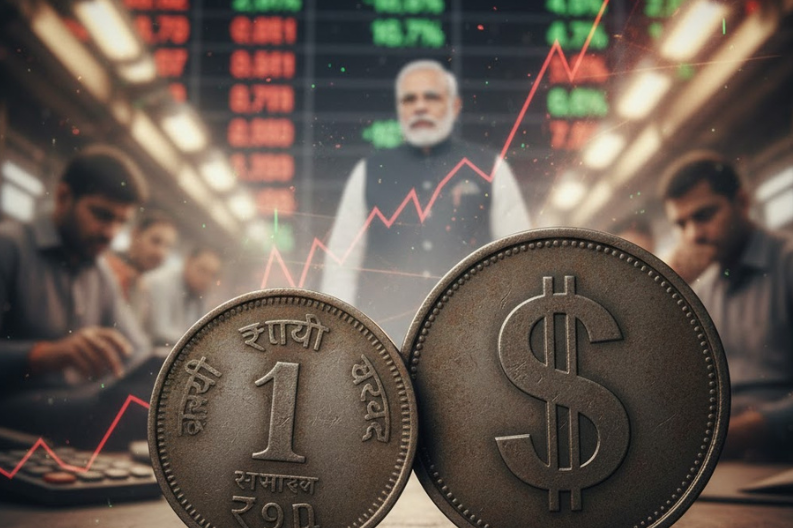Congress criticizes PM Modi over rupee’s sharp decline as the Indian currency continues to fall against the US dollar. During the latest market session, the rupee opened at 89.46 and later moved to 89.17, showing a short-lived rise of 49 paise. However, it then slipped by 98 paise to hit 89.66, its lowest level so far. This sharp fall has created concern among traders and has increased pressure on businesses that depend on imports in places like Mohali, Chandigarh, and Punjab.
Moreover, strong demand for US dollars in the forex market and heavy selling in both local and global stock markets have added to the rupee’s troubles. Many companies are worried about trade uncertainties, which are affecting sectors that rely on overseas supplies. When the rupee weakens, imported items such as electronics and packaged foods often become costly, and families may feel the impact in their monthly budgets.
Responding to this decline, Congress communications chief Jairam Ramesh posted his views on X. He wrote that the rupee continues to fall and is close to crossing the 90-per-dollar mark. He also reminded the public of Modi’s 2013 remark, where he mocked the previous government by comparing the falling rupee to the government’s dignity. Congress leaders now use that old statement to criticize Modi as the currency weakens again.
This week’s fall of 98 paise marked the biggest one-day decline in more than three years. Earlier, the rupee had dropped by 99 paise on February 24, 2022. These repeated dips show the stress on India’s economy and reflect the concerns of industries that rely on imports. For example, local electronics stores in Chandigarh may soon raise prices because a weaker rupee increases their buying cost.
Additionally, a falling rupee affects investor confidence. When investors sense instability, they may move their money out of the country, which can slow job growth and delay business expansion. Many experts say global conditions, inflation levels, and interest-rate changes influence the rupee’s strength. Shifts in trade policies also affect the currency, especially when major countries adjust their import rules.
The government continues taking steps to manage the situation. Authorities focus on controlling inflation and balancing the supply of dollars in the market. These measures often help stabilize the currency, although improvements may take time. Economists also believe that stronger exports and reduced import dependence can help India build a more stable financial position.
Meanwhile, citizens are encouraged to stay aware of how currency changes affect daily life. People can adjust their spending, track price changes, and plan budgets more carefully. Understanding basic economic trends helps households stay better prepared during uncertain times.
In summary, the rupee’s sharp movements highlight deeper economic challenges and ongoing political debate. Congress criticizes PM Modi over rupee’s sharp decline as the currency struggles, and many people now watch closely to see how these changes may affect their expenses and the country’s financial future.



